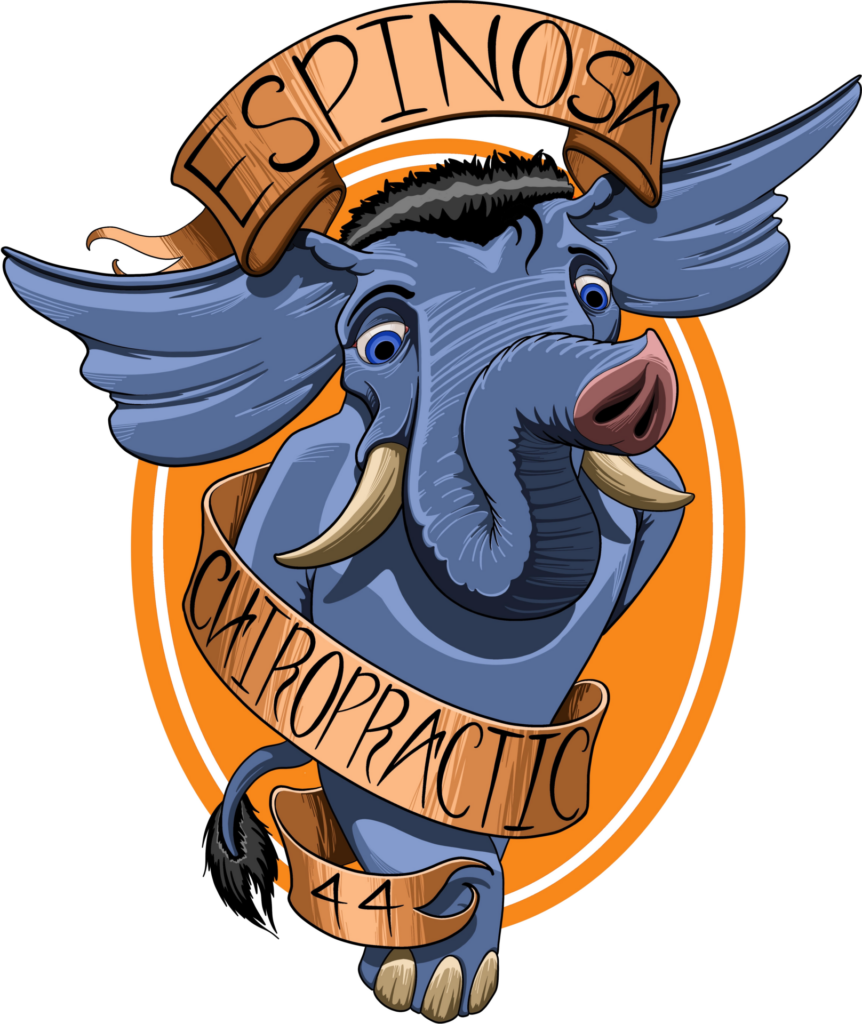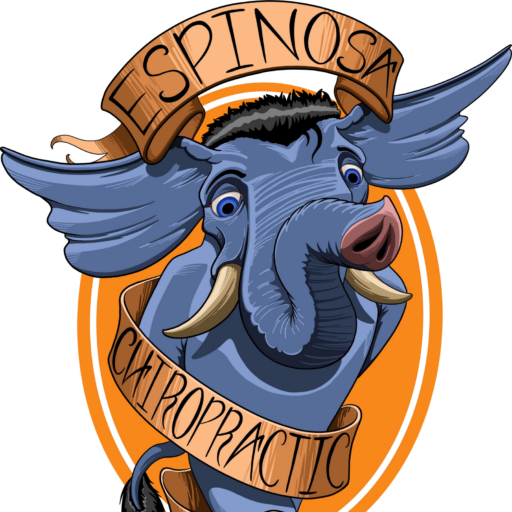Archive for February 2017
Don’t Fear the Office Chair
Don’t let flexibility slip away while you work…
….because it will! Sitting hunched over for 8 hours is a behavior that contributes to a steep decline in flexibility as we get older. If you choose to do nothing about it, then you are leaving your body at risk for injury from basic daily motions. Think of all the standing, walking, lifting, twisting and turning movements that you do in a day, many of which are unconscious processes. Now imagine that you couldn’t do these with ease, that simply standing up could cause you pain. That is what is at stake if we let flexibility slip away.
Can you spare two minutes?
Instead focus on simple upkeep- 2 minutes an hour to establish a baseline of flexibility and keep muscles tension free; we promise you the effects will be astonishing. Start with these basic movements, all of which can be done from the seated position in your office chair:
- Gentle twist: sit up straight, inhale and exhale while gently twisting your body to the left, as you look over your left shoulder. Place your right hand on your knee and rest for 10 seconds then repeat on the other side.
- Release the shoulders: hands off the keyboard, sit up straight and squeeze your shoulder blades in toward each other. Hold 10 seconds and release.
- Release the neck: sit up straight, place your hand on top of your hand and gently lower your left ear toward your shoulder. Feel the stretch in the opposing side and hold 5 seconds, then repeat on the other side.
- Forward fold: sit on the edge of your chair, extend your legs with feet hip width apart. Inhale and exhale and fold your upper body down, reaching toward your feet with your hands. Grasp your ankles and rest this way for 10 seconds.
Use your time at work to preserve flexibility
Now instead of a situation in which you are actively defeating your own flexibility, you are adding to it! This is a crucial difference-maker in our experience as we age and our bodies slow down: flexibility is one of the factors that can make the difference between chronic pain and an old age of independence. Let’s start restoring that flexibility today! Give our office in Sacramento a call to schedule an appointment.
Dr. Raymond Espinosa, D.C.
Headaches in the Office: A Computer Screen Conundrum
Computer screen headaches are on the rise
For many people, a work day is defined by bodies crunched over, eyes focusing on a bright screen, with the whole office illuminated and a vortex of sound surrounding them. Is it any wonder that a headache could develop out of this kind of sensory stimulation and poor posture? The importance of this illustration is not that a headache could develop, but the fact that there are so many factors contributing to it.
While it is important to determine the true cause of your headache, the computer screen and associated eye strain is quite a common trigger.
- Resting focus: because of the small text, we keep computers closer than is a comfortable resting distance for our eyes.
- Eye strain: focusing intently on small text causes eye strain as does switching focus between screen and desk.
- Lighting: computer work on a bright screen in a brightly lit environment is too much for our eyes to take in constantly and can lead to strain.
Prevention of computer screen headaches
Let’s focus on ways to lessen the impact of a computer screen as it contributes to your headaches.
- Take a break once every hour to do something completely unrelated to the screen.
- If possible, turn down overhead lights and adjust the brightness and contrast of your monitor.
- Create a good ergonomic environment that makes posture easy for your body and reduces eye strain.
- Keep your eyes from refocusing too often; this means from notepad to screen for example. Rapid flitting between two objects is difficult for the eyes.
Prevention is a key part of our wellness program at Espinosa Family Chiropractic. We believe that many of the maleficent factors in life such as headaches can be negated with enough attention to prevention and to that effect, we offer your our services and expertise to keep you happy and healthy. Give our office in Sacramento a call to schedule an appointment today.
Dr. Raymond Espinosa, D.C.
Switch it off! Letting go of Stress
When only stress remains in the day…
Many people complain of not being able to switch off when they leave work- they arrive home to more thoughts of the job and the feeling that they can’t let go. This sends us spiraling into stress when we should be unwinding. As an office of chiropractic, we are primarily concerned with the effect of stress on the body- the tense muscles, tension headaches and shallow breathing that it causes. We have brainstormed a few simple techniques for diverting your mind from the vicious cycle of stress.
Physical ways to let go of stress: Legs-up-the-wall
It can be hard to remove yourself from the vicious cycle that stress causes, but sometimes you have to get inverted! One of the simplest and most powerful yoga poses, legs up the wall has the benefits of:
- boosting circulation to the upper body
- relieving lower back pain
- alleviating headaches
- boosting energy
- encouraging lymph and other fluids to drain from the legs
How to do it:
- Sit with left side against the wall
- Turn your body to the left and bring your legs up on the wall
- Lower your back to the floor and lie down
- Rest shoulders and head on the floor
- Get buttocks as close to the wall as possible
- Let your arms rest extended to the sides.
- Practice deep breathing and hold for 5 minutes
Progressive relaxation:
Start breathing in deeply, expanding the belly and holding for 4 seconds. Exhale for the same amount of time. Focus on each breath and the rhythm will help stress melt away. Now add in part two: with each inhale, tense a different muscle group and then let go on the exhale. Dedicating a few minutes to physically unwinding after work will help to keep stress at bay when you are trying to relax at home. Give it a try next time you are feeling burnt out!
Dr. Raymond Espinosa, D.C.
Is your Head Balanced atop your Spine?
Your head weighs more than you give it credit for…
Forward head posture (FHP) is a pervasive positioning of the head related to overuse of cell phones and computers. The wall test is a simple way to diagnose yourself with FHP:
- Stand straight against a wall
- Feet shoulder width apart.
- Heels, buttocks and shoulder blades touching the wall
- Is the back of your head touching the wall?
If not, there’s a good chance your head is resting forward most of the day. This is problematic when you consider studies that suggest for every inch you move forward, you are adding 10 pounds of extra pressure to the spine. It’s no wonder we are seeing the onset of degenerative spinal conditions shift to an earlier demographic.
How we help at Espinosa Family Chiropractic
At our office in Sacramento, we help you address FHP through postural analysis and awareness, chiropractic adjustment and attention to the muscles that matter. A leading reason for FHP is tightening and weakness of the muscles which are used to support the head at the top of the spine (the head’s center of gravity). This is a key area of focus for us at Espinosa Family Chiropractic. We want to release tight muscles such as the occipitals and the sternocleidomastoid and focus on strengthening the muscles that will make it easier to keep your head atop the spine without craning forward.
Dr. Raymond Espinosa, D.C.
Millions of Keystrokes: a Picture of Repetitive Stress Injuries
When you work at the computer, your hands are on the front line
For some it may take weeks, for others years, to show but the repetitive stress of typing all the time does take its toll on the fingers, wrists and forearms. And this map of pain can be traced further to the shoulders, neck and spine- science is clear regarding the harm of sit-heavy lifestyles. Most employers invest little in education regarding ergonomics and posture, so it is up to us, the responsible workers, beholden to our own health, to take action!
Easy stretches on-the-job:
- The paci-fists: starting with your hands wide open, gently squeeze them into fists and open them again. Repeat 10 times.
- Clasp hands together in front of you and extend arms with palms facing outward. Hold 10 seconds then bring hands over head and repeat.
- The prayer: hands together, palms and fingers flat against each other. Push hands in toward each other to provide a stretch to the wrist.
Do these as often as the thought strikes you and it will go a long way toward preventing wrist and hand pain from occurring in the first place. Repetitive stress is ubiquitous in the workplace: listen closely when your body twinges with tightness or pain and respond in the moment! This will stop the problem from compounding and causing more trouble down the road. If you need help addressing repetitive stress that won’t seem to go away, give our office in Sacramento a call. We specialize in finding and treating the cause, not the symptom!
Dr. Raymond Espinosa, D.C.


